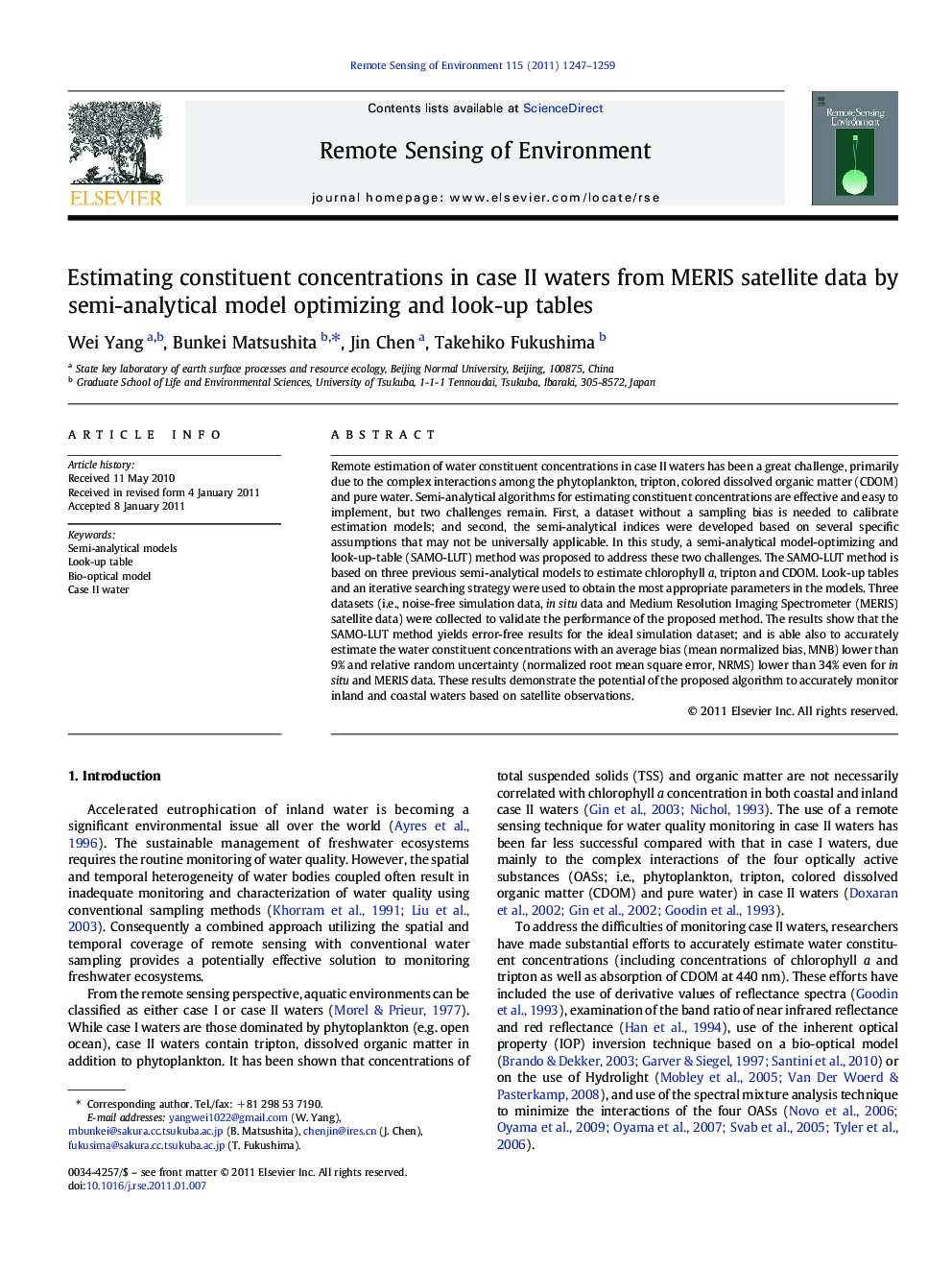| Article ID | Journal | Published Year | Pages | File Type |
|---|---|---|---|---|
| 4459689 | Remote Sensing of Environment | 2011 | 13 Pages |
Remote estimation of water constituent concentrations in case II waters has been a great challenge, primarily due to the complex interactions among the phytoplankton, tripton, colored dissolved organic matter (CDOM) and pure water. Semi-analytical algorithms for estimating constituent concentrations are effective and easy to implement, but two challenges remain. First, a dataset without a sampling bias is needed to calibrate estimation models; and second, the semi-analytical indices were developed based on several specific assumptions that may not be universally applicable. In this study, a semi-analytical model-optimizing and look-up-table (SAMO-LUT) method was proposed to address these two challenges. The SAMO-LUT method is based on three previous semi-analytical models to estimate chlorophyll a, tripton and CDOM. Look-up tables and an iterative searching strategy were used to obtain the most appropriate parameters in the models. Three datasets (i.e., noise-free simulation data, in situ data and Medium Resolution Imaging Spectrometer (MERIS) satellite data) were collected to validate the performance of the proposed method. The results show that the SAMO-LUT method yields error-free results for the ideal simulation dataset; and is able also to accurately estimate the water constituent concentrations with an average bias (mean normalized bias, MNB) lower than 9% and relative random uncertainty (normalized root mean square error, NRMS) lower than 34% even for in situ and MERIS data. These results demonstrate the potential of the proposed algorithm to accurately monitor inland and coastal waters based on satellite observations.
Research Highlights► We proposed a new method to retrieve constituent concentrations in case II waters. ► We tested the method in two turbid Asian lakes within four periods. ► We obtained acceptable accuracies both for in situ datasets and satellite images. ► The method has the potential to accurately monitor inland and coastal waters.
